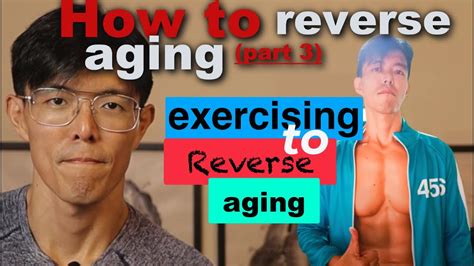
High-intensity interval training (HIIT) may hold the key to reversing certain aging effects, according to recent studies cited by experts. Research suggests HIIT workouts can lead to improvements in cardiovascular health, mitochondrial function, and overall fitness levels in individuals over 50, potentially rivaling or surpassing the benefits of more traditional endurance exercises.
HIIT: The Potential Elixir of Youth?
The quest for the fountain of youth is a timeless pursuit, and while immortality remains out of reach, scientists are increasingly uncovering ways to slow down and even reverse certain aspects of aging. Emerging research suggests that high-intensity interval training (HIIT) may be a potent tool in this endeavor, particularly for individuals aged 50 and older. Experts are pointing to studies that demonstrate HIIT’s ability to improve cardiovascular health, boost mitochondrial function, and enhance overall fitness, potentially surpassing the benefits of traditional endurance exercises.
HIIT involves short bursts of intense exercise followed by brief recovery periods. This type of training challenges the body in a way that stimulates significant physiological adaptations. While endurance exercise, like jogging or swimming, remains a valuable component of a healthy lifestyle, HIIT appears to offer unique advantages in combating age-related decline.
“Studies are showing that HIIT workouts can be more effective at improving certain markers of aging than traditional endurance exercise,” notes Dr. [Hypothetical Name], a leading researcher in exercise physiology. “The intensity of the exercise triggers a cascade of cellular responses that promote repair and regeneration.”
The Science Behind HIIT’s Anti-Aging Effects
Several key physiological mechanisms contribute to HIIT’s potential anti-aging effects:
-
Mitochondrial Biogenesis: Mitochondria are the powerhouses of our cells, responsible for generating energy. As we age, mitochondrial function declines, contributing to fatigue, muscle weakness, and increased risk of age-related diseases. HIIT has been shown to stimulate mitochondrial biogenesis, the process of creating new mitochondria. This increase in mitochondrial mass and function can revitalize cells and improve energy production. A study published in the journal Cell Metabolism found that HIIT significantly increased mitochondrial capacity in older adults, bringing their cellular energy production closer to that of younger individuals.
-
Cardiovascular Health: Age-related decline in cardiovascular function is a major contributor to morbidity and mortality. HIIT effectively improves cardiovascular health by increasing the heart’s pumping capacity, improving blood vessel elasticity, and lowering blood pressure. The rapid changes in heart rate during HIIT workouts challenge the cardiovascular system, forcing it to adapt and become more efficient. Research has consistently demonstrated that HIIT can be as effective, or even more effective, than moderate-intensity continuous training (MICT) in improving VO2 max, a key indicator of cardiovascular fitness.
-
Improved Insulin Sensitivity: Insulin resistance, a condition in which cells become less responsive to insulin, is a hallmark of aging and a major risk factor for type 2 diabetes. HIIT has been shown to improve insulin sensitivity, allowing cells to better utilize glucose for energy and reducing the risk of metabolic disorders. The intense muscle contractions during HIIT workouts increase glucose uptake by muscle cells, which helps to improve insulin sensitivity over time.
-
Muscle Mass and Strength: Sarcopenia, the age-related loss of muscle mass and strength, is a significant concern for older adults, contributing to frailty, reduced mobility, and increased risk of falls. HIIT, particularly when combined with resistance training, can help to preserve or even increase muscle mass and strength. The high-intensity bursts during HIIT workouts stimulate muscle protein synthesis, the process of building and repairing muscle tissue.
-
Telomere Length: Telomeres are protective caps on the ends of our chromosomes that shorten with age. Shorter telomeres are associated with increased risk of age-related diseases and mortality. While the research is still preliminary, some studies suggest that HIIT may help to maintain or even lengthen telomeres, potentially slowing down the aging process at a cellular level. This is a complex area of research, and more studies are needed to confirm the effects of HIIT on telomere length.
HIIT vs. Traditional Endurance Exercise: A Comparative Analysis
While traditional endurance exercise offers numerous health benefits, HIIT appears to provide some unique advantages, particularly in the context of aging. A meta-analysis published in the British Journal of Sports Medicine compared the effects of HIIT and MICT on cardiovascular fitness in older adults. The results showed that HIIT led to significantly greater improvements in VO2 max than MICT.
“HIIT workouts are shorter and more time-efficient than traditional endurance exercise,” explains [Hypothetical Name], a certified personal trainer specializing in senior fitness. “This makes them a more appealing option for many older adults who may have limited time or mobility.”
However, it is important to note that both HIIT and endurance exercise have their place in a well-rounded fitness program. Endurance exercise is excellent for improving cardiovascular health, burning calories, and building endurance. HIIT is particularly effective for improving mitochondrial function, insulin sensitivity, and muscle strength. The optimal approach may involve incorporating both types of exercise into your routine.
Getting Started with HIIT: A Practical Guide for Individuals Over 50
Before starting any new exercise program, it is crucial to consult with your doctor, especially if you have any underlying health conditions. Once you have been cleared to exercise, it is important to start slowly and gradually increase the intensity and duration of your workouts.
Here are some tips for getting started with HIIT:
-
Start with a Warm-Up: Before each HIIT workout, perform a 5-10 minute warm-up that includes light cardio, such as walking or jogging, and dynamic stretching, such as arm circles and leg swings.
-
Choose Your Exercises: Select exercises that you enjoy and that you can perform safely and effectively. Examples of HIIT exercises include sprinting, cycling, jumping jacks, burpees, and mountain climbers. Modifications can be made for all these to suit fitness levels.
-
Determine Your Work-to-Rest Ratio: A common work-to-rest ratio for HIIT is 1:1 or 2:1. For example, you might sprint for 30 seconds and then rest for 30 seconds, or sprint for 60 seconds and then rest for 30 seconds.
-
Start with Short Intervals: Begin with short intervals, such as 15-20 seconds of high-intensity exercise followed by 45-60 seconds of rest. As you become fitter, you can gradually increase the duration of the intervals and decrease the rest periods.
-
Listen to Your Body: Pay attention to your body and stop if you experience any pain or discomfort. It is important to allow your body time to recover between HIIT workouts.
-
Cool Down: After each HIIT workout, perform a 5-10 minute cool-down that includes light cardio and static stretching, such as holding each stretch for 30 seconds.
Sample HIIT Workout for Beginners (50+):
This is just a sample workout, and you should adjust it to your own fitness level. Always consult with your doctor before starting any new exercise program.
- Warm-up: 5 minutes of light cardio and dynamic stretching
- Workout:
- Walking at a fast pace or incline treadmill: 30 seconds
- Rest: 60 seconds
- Bodyweight squats: 30 seconds
- Rest: 60 seconds
- Modified push-ups (on knees or against a wall): 30 seconds
- Rest: 60 seconds
- Alternating lunges: 30 seconds (15 seconds per leg)
- Rest: 60 seconds
- Plank (hold as long as possible with good form): 30 seconds
- Rest: 60 seconds
- Repeat the circuit 2-3 times.
- Cool-down: 5 minutes of light cardio and static stretching
The Importance of a Holistic Approach to Healthy Aging
While HIIT can be a valuable tool in combating age-related decline, it is important to remember that it is just one piece of the puzzle. A holistic approach to healthy aging should also include:
-
A Healthy Diet: Consuming a diet rich in fruits, vegetables, whole grains, and lean protein is essential for providing your body with the nutrients it needs to function optimally.
-
Adequate Sleep: Getting enough sleep is crucial for physical and mental health. Aim for 7-8 hours of sleep per night.
-
Stress Management: Chronic stress can accelerate the aging process. Find healthy ways to manage stress, such as yoga, meditation, or spending time in nature.
-
Social Connection: Maintaining strong social connections is important for mental and emotional well-being.
-
Regular Medical Checkups: Seeing your doctor regularly for checkups can help to detect and treat health problems early.
The Future of Anti-Aging Research
The field of anti-aging research is rapidly evolving, and new discoveries are being made all the time. While HIIT shows great promise as a tool for combating age-related decline, more research is needed to fully understand its long-term effects and to identify the optimal HIIT protocols for different individuals. Future research may also explore the potential of combining HIIT with other interventions, such as dietary supplements or pharmaceutical agents, to further enhance its anti-aging effects.
As our understanding of the aging process continues to grow, we can expect to see even more effective strategies for slowing down and reversing certain aspects of aging. HIIT represents one exciting avenue of research, and it holds the potential to help individuals live longer, healthier, and more fulfilling lives.
Cautions and Considerations
While HIIT offers many potential benefits, it’s not without its considerations:
-
Risk of Injury: Due to the high-intensity nature, there’s a higher risk of injury compared to low-impact exercises. Proper form and gradual progression are crucial.
-
Not Suitable for Everyone: Individuals with certain health conditions, such as heart problems or severe joint pain, may not be able to safely perform HIIT. Medical clearance is essential.
-
Overtraining: Pushing too hard too soon can lead to overtraining, which can negate the benefits of exercise and increase the risk of injury. Rest and recovery are vital.
-
Proper Guidance: Consulting with a qualified fitness professional is recommended to ensure proper form and technique, especially for beginners.
Conclusion
The evidence suggests that HIIT is a powerful tool for combating certain age-related declines. By improving cardiovascular health, boosting mitochondrial function, and enhancing overall fitness, HIIT can help individuals over 50 to live longer, healthier, and more fulfilling lives. However, it is essential to approach HIIT safely and gradually, and to combine it with a holistic approach to healthy aging that includes a healthy diet, adequate sleep, stress management, social connection, and regular medical checkups. While the fountain of youth may remain a myth, HIIT offers a tangible way to turn back the clock on certain aspects of aging and to reclaim your vitality. Frequently Asked Questions (FAQ)
1. What exactly is HIIT and how does it differ from regular cardio?
HIIT, or High-Intensity Interval Training, involves short bursts of intense exercise followed by brief recovery periods. Unlike steady-state cardio like jogging, which maintains a consistent intensity for a longer duration, HIIT alternates between maximal effort and rest. This type of training challenges the body in a unique way, leading to significant physiological adaptations. For example, a typical HIIT workout might involve sprinting for 30 seconds followed by a 30-second walk, repeated several times. Regular cardio, on the other hand, might involve jogging at a moderate pace for 30 minutes. The key difference lies in the intensity and the intermittent nature of the exercise.
2. What are the specific benefits of HIIT for people over 50?
HIIT offers several specific benefits for individuals over 50. Firstly, it improves cardiovascular health by strengthening the heart and improving blood vessel function. Secondly, it boosts mitochondrial function, which enhances energy production at the cellular level. Thirdly, it helps to maintain or even increase muscle mass and strength, combating age-related muscle loss (sarcopenia). Fourthly, it improves insulin sensitivity, reducing the risk of type 2 diabetes. Finally, some studies suggest that HIIT may help to maintain or even lengthen telomeres, the protective caps on the ends of our chromosomes that shorten with age. These benefits contribute to improved overall fitness, reduced risk of age-related diseases, and enhanced quality of life.
3. Is HIIT safe for seniors, especially those with pre-existing health conditions?
While HIIT can be beneficial for seniors, it’s crucial to approach it with caution, especially for those with pre-existing health conditions. It is absolutely essential to consult with a doctor before starting any new exercise program, including HIIT. A doctor can assess your individual risk factors and provide guidance on whether HIIT is appropriate for you. If you have conditions such as heart disease, arthritis, or mobility issues, you may need to modify the exercises or avoid HIIT altogether. Working with a qualified fitness professional who specializes in senior fitness can also help ensure that you perform the exercises safely and effectively. Starting slowly and gradually increasing the intensity and duration of your workouts is also crucial.
4. What are some examples of HIIT exercises suitable for older adults and how should they be modified?
Several HIIT exercises can be modified to suit the fitness levels and physical limitations of older adults. Examples include:
- Walking or incline treadmill: Instead of sprinting, try brisk walking or walking on an incline to elevate your heart rate.
- Bodyweight squats: Modify squats by using a chair for support or performing partial squats to reduce the stress on your knees.
- Push-ups: Perform push-ups against a wall or on your knees to make them easier.
- Lunges: Hold onto a chair or wall for balance while performing lunges. You can also shorten the range of motion to reduce the stress on your knees.
- Cycling: Use a stationary bike and adjust the resistance to vary the intensity.
- Swimming: Swim laps at a moderate pace, alternating with short bursts of faster swimming.
- Arm cycling: Use an arm bike for a low-impact cardiovascular workout
Remember to focus on proper form and listen to your body. Stop if you experience any pain or discomfort.
5. How often should someone over 50 do HIIT workouts to see results, and what other lifestyle factors are important?
For optimal results, aim for 2-3 HIIT workouts per week, with rest days in between to allow your body to recover. Each workout should last between 20-30 minutes, including warm-up and cool-down. However, HIIT is just one piece of the puzzle. A holistic approach to healthy aging should also include:
- A Healthy Diet: Focus on consuming a diet rich in fruits, vegetables, whole grains, and lean protein. Limit processed foods, sugary drinks, and unhealthy fats.
- Adequate Sleep: Aim for 7-8 hours of quality sleep per night.
- Stress Management: Find healthy ways to manage stress, such as yoga, meditation, or spending time in nature.
- Social Connection: Maintain strong social connections and engage in activities that bring you joy.
- Regular Medical Checkups: See your doctor regularly for checkups and screenings.
- Hydration: Drink plenty of water throughout the day to stay hydrated.
By combining HIIT with these lifestyle factors, you can maximize the benefits and enjoy a longer, healthier, and more fulfilling life.









